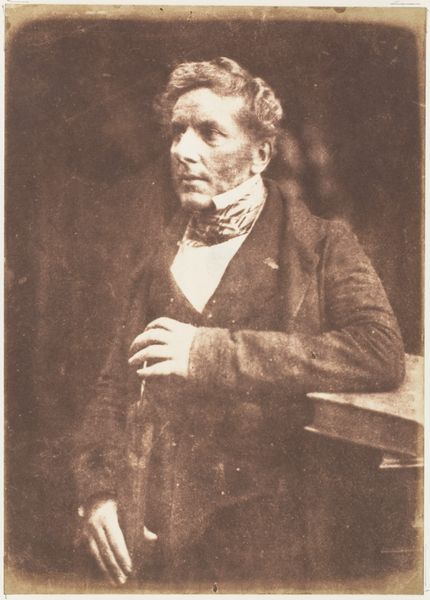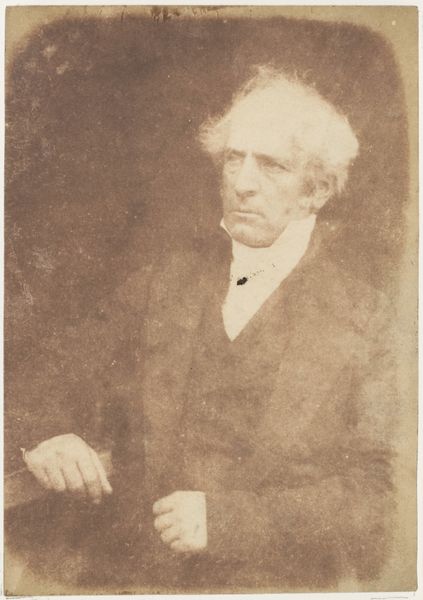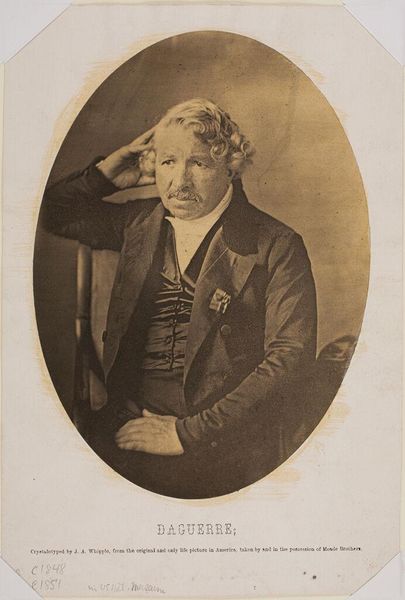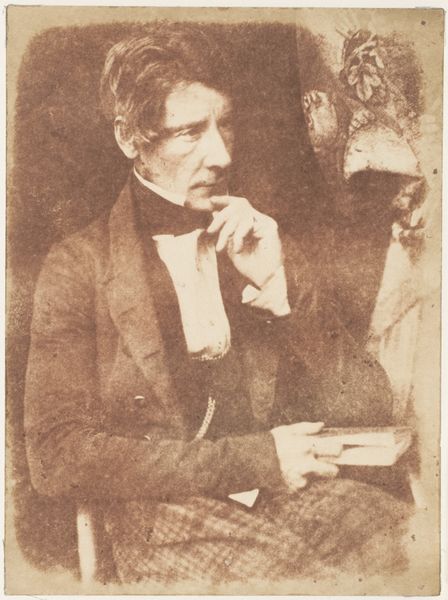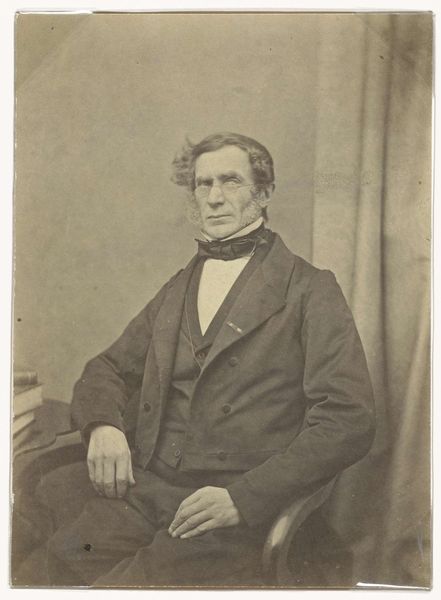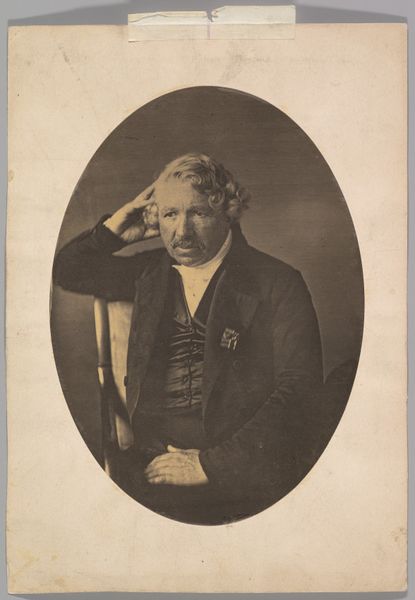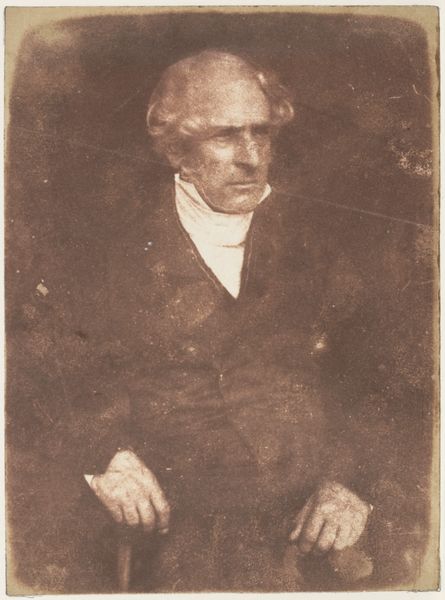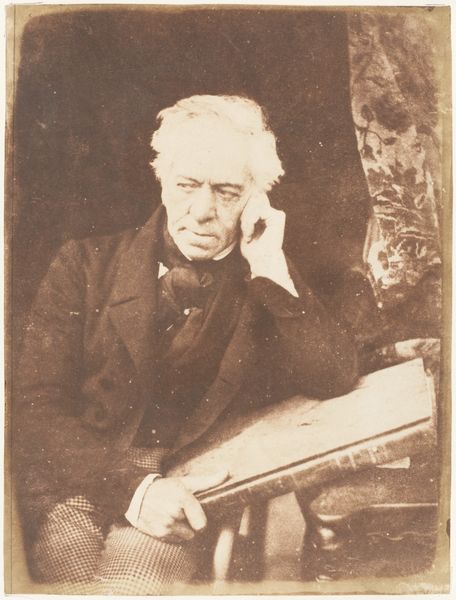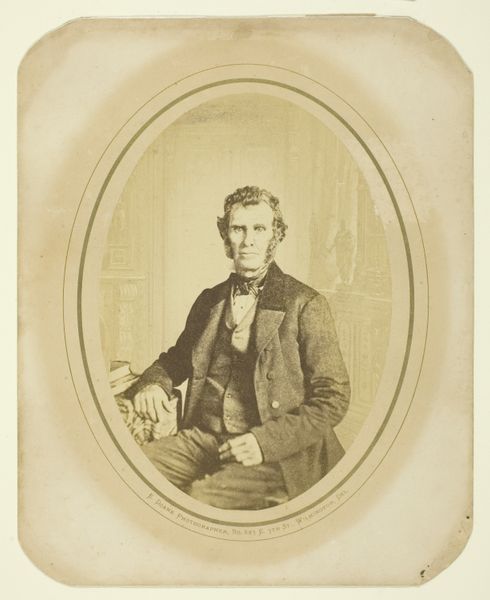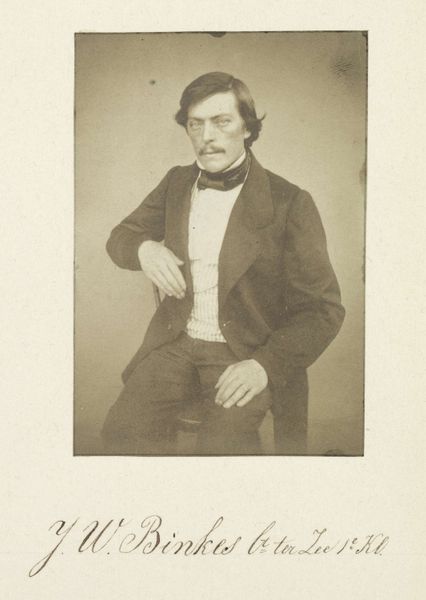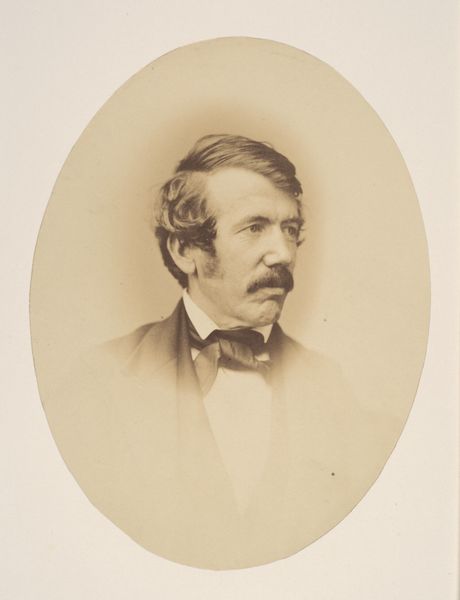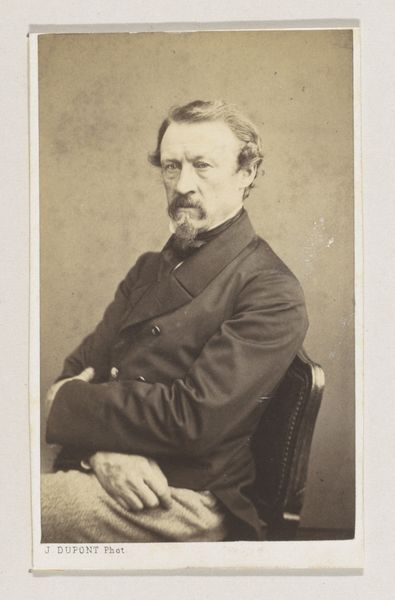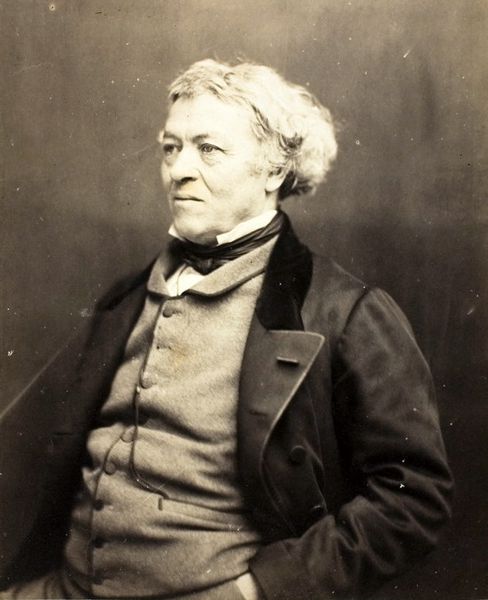
daguerreotype, photography
#
portrait
#
daguerreotype
#
photography
#
romanticism
#
genre-painting
Copyright: Public Domain
Curator: Hill and Adamson captured this image of Dr. Smyttan sometime between 1843 and 1847 using the daguerreotype process. It's currently held at the Metropolitan Museum of Art. Editor: Immediately, I am struck by the pose; it's intensely contemplative. The figure is draped in shadow. His hand is raised to his mouth; the diagonal of his arm cuts across his body, drawing my eye from his face down to the detail of the clothing. Curator: Considering the social context of the mid-19th century, this image embodies a specific understanding of masculinity—thoughtful, intellectual, and reserved. It contrasts with performative displays of masculinity more typically visible throughout other eras. It prompts consideration of how expectations around gender and profession intersect. Editor: I find the image captivating because of its technical limitations. Notice how the texture and light define the space, emphasizing form without the use of a wide spectrum of tonality. Curator: Daguerreotypes, inherently tied to portraiture, also document evolving class structures. Photographic portraits were more accessible than painted ones, reshaping visual representation, and offering new access to visual identity to different people. Editor: There’s an interesting tension created by the out-of-focus background elements against the foreground details, an approach often associated with the later pictorialist movement in photography. It softens what could otherwise be an unflattering, hyper-realistic representation. Curator: Exactly, we see hints of romanticism through the image softness. Considering this and the pose, Smyttan presents not just as a medical professional, but as a sensitive, intelligent, and feeling human being. Editor: This close reading truly reveals the inherent value of technical simplicity and restricted media as the image moves beyond mere representation to convey greater emotion and tone. Curator: Yes, thinking about representation through the lens of technological advancement makes one wonder about modern representation. Editor: I couldn't agree more. Thank you.
Comments
No comments
Be the first to comment and join the conversation on the ultimate creative platform.
